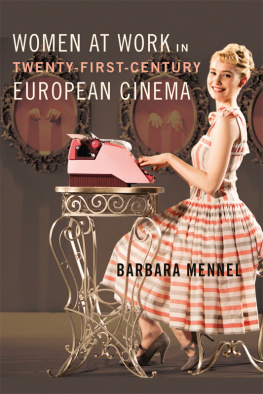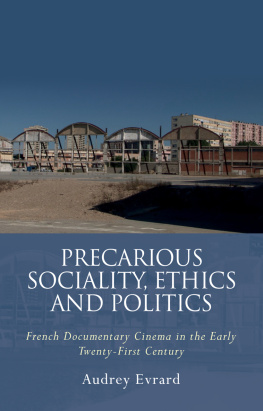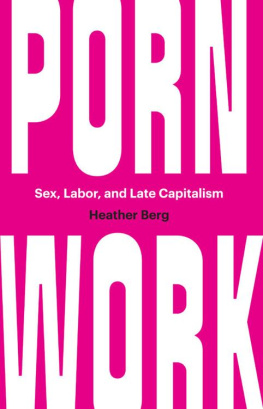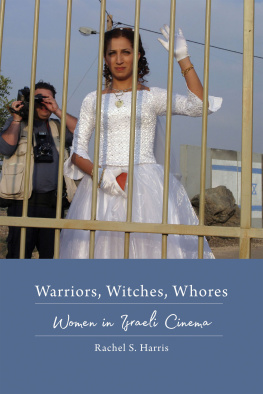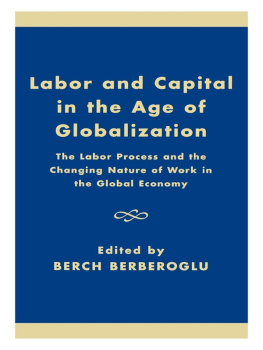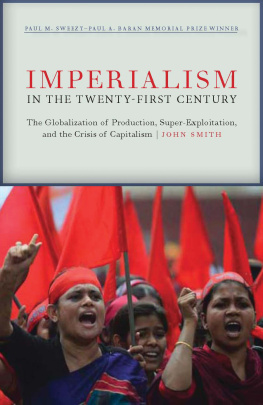Women at Work in Twenty-First-Century European Cinema
Women at Work in
Twenty-First-Century
European Cinema
BARBARA MENNEL
2019 by the Board of Trustees
of the University of Illinois
All rights reserved
Library of Congress Cataloging-in-Publication Data
Names: Mennel, Barbara Caroline, author.
Title: Women at work in twenty-first-century European cinema / Barbara Mennel.
Description: [Urbana, Illlinois] : University of Illinois Press, [2019] | Includes bibliographical references and indexes.
Identifiers: LCCN 2018032356| ISBN 9780252042225 (cloth : alk. paper) | ISBN 9780252083952 (paperback : alk. paper)
Subjects: LCSH : Working women in motion pictures. | Motion picturesEuropeHistory21st century.
Classification: LCC PN 1995.9. W 6 M 46 2019 | DDC 791.43/6522dc23 LC record available at https://lccn.loc.gov/2018032356
Ebook ISBN 978-0-252-05096-1
Cover illustration: Dborah Franois in Populaire , directed by Rgis Roinsard (The Weinstein Company/Photofest)
Contents
Acknowledgments
T hinking about invisible emotional labor has made me appreciate the many ways others have sustained me and this project over the years. Several institutions have supported the writing of this book. A two-month research stay as a Paul Mellon Visiting Senior Fellow at the Center for the Advanced Studies of the Visual Arts at the National Gallery in Washington, DC, in 2013 provided me with a unique access to materials and a productive environment for writing. Dean Elizabeth Cropper, associate deans Therese OMalley and Peter Lukehart, the film departments Margaret Parsons and Joanna Raczynska, senior fellows Arnold Witte and Christine Goettler, and research associate Emily Pugh brought perspectives of art history and visual culture to bear on the project. Based on the early progress I was able to make, the organization Women in German endorsed the book project with a Faculty Research Award in 2015.
As a Marie Skodowaska Curie FCFP Senior Fellow in 201617 at the Freiburg Institute for Advanced Studies I benefited from director Bernd Kortmanns enthusiasm for interdisciplinarity. Carsten Dose, Britta Kst, Petra Fischer, Lena Walter, Kathrin Burkat, and Roland Muntschick made it possible for me to focus on completing a draft of the manuscript. Fellows Martin Bemmann, Todd Carmody, Carolin Duttlinger, Winfried Fluck, Joseph Harris, Lorenzo Kamel, Martin Loughlin, Nicola Piper, Andrea Riemenschnitter, Marie Seong-Hak Kim, and Aude Wirth-Jaillard created community around scholarship.
The University of Florida, especially the College of Liberal Arts and Sciences and the Departments of English and of Languages, Literatures, and Cultures, supported this work generously. I would like to acknowledge the research funding provided by the University of Florida College of Liberal Arts and Sciences. In addition, a one-semester sabbatical, humanities enhancement grants, and a faculty enhancement opportunity grant enabled me to advance the project at its different stages. The Center for European Studies provided summer travel funds and allowed me to participate in a workshop entitled Capitalism in the New Europe with political economist Dorothee Bohle. Collaborating with the centers director, Amie Kreppel, made possible visits by scholars of European cinema, including Anik Imre, Rosalind Galt, and Karl Schoonover. My former and current chairs, Akntnd Aknyem, Sidney I. Dobrin, Kenneth Kidd, and Ingrid Kleespies, and Associate Deans David Pharies and Mary Watt provided crucial administrative support. My colleagues in German studies, Franz Futterknecht, Will Hasty, Eric Kligermann, and Chris Overstreet, took over the daily grind while I spent a year away from my regular duties. Aida Hozi read parts of the manuscript and watched films with me. More than that, she and Richard Scher opened their home and prepared sumptuous meals for me.
I have been fortunate to present drafts of sections of the book at invited talks and engage in scholarly conversations at several conference panels about cinema and labor. For generous invitations to the Johannes Gutenberg University in Mainz, Johns Hopkins University, Georgetown University, the University of Maryland, College Park, the University of Pittsburgh, and the University of Toronto, I thank Nathan Dize, Angelica Fenner, Uli Linke, John Lyon, Sabine Nessel, Katrin Pahl, Peter Pfeiffer, and Kayla Jean Watson. Emma McGlennen provided me with a thorough and astute response to my talk. I also benefitted from participating on three panels on labor and film at the Society for Cinema and Media Studies. Vinzenz Hedigers excitement for the term heritage cinema of industrial labor was an infectious boost! Tamao Nakahara and Daniela Berghahn organized two panels where I tried out initial versions of the ideas included in this book. Daniela also brought key films and readings to my attention. Earlier versions of sections of this book appeared in Women in German Yearbook (University of Nebraska Press, 2014) and in Genre and the (Post)Communist Woman: Analyzing Transformations of the Central and Eastern European Female Ideal , edited by Florentina C. Andreescu and Michael J. Shapiro (Routledge, 2014). I am grateful for the permission to reuse this material.
Colleagues, friends, and strangers gave time and effort in a myriad of ways. Fellow scholars generously read and commented on individual chapters despite their own writing projects: Monika Shafi, Berna Gneli, and Erica Fretwell nudged me along with encouragement and critical questions. Erica Carter offered references in more than one important conversation. Ann Manov translated song texts, and world traveler Ada Cruz told me, You can do it, Professor! Scholars Hester Baer, Ipek A. Celik, Michael Falser, Elena Gorfinkel, and Jaclyn Kurash generously shared published and unpublished work with me. Filmmakers kindly sent me DVDs or gave me access to their films. Thank you to Ursula Biemann, Clara van Gool, Mako Idemitsu, Ivana Mladenovic, Anja Salomonowitz, and Elke Sasse. Former students, curators, librarians, academics, and cinema directors provided me with film titles: Mary Fessenden, Jodi Greig, Danijela Majstorovic, Erinn Murray, Kerry Oliver-Smith, Amy Ongiri, Katy Ross, and Judy Shoaf. While some of the films and texts ended up on the books cutting-room floor, watching and reading them informed my thinking.
A handful of continuous collaborators were steadfast supporters from the projects inception to its final incarnation. An enthusiastic advocate, Randall Halle encouraged me throughout the years and staged an important intervention in Paris, no less. Sabine Hake also championed the significance of my undertaking, always with a list of critical questions. Sabine is an important role model and mentor for a generation of scholarsanother form of invisible labor. Katrin Siegs ability to reflect ideas refracted through her own sophisticated thinking left a lasting imprint on the manuscript. Discussing theories, films, and chapters in Gainesville, Washington, DC, Paris, Freiburg, Berlin, Venice, Kassel, and Atlanta maps our shared conversation over the last couple of years. Closer to home, Jeff Adler, historian by training and film scholar by osmosis, has accompanied the project from its infancy through its gestational phases with a critical eye toward detail and a sophisticated understanding of what is at stake in its broader questions. At the University of Illinois Press, Danny Nasset is a dream editor. Two substantive, engaged, and generous manuscript reviews by Hester Baer and Maria Stehle provided rigorous and supportive feedback that identified areas in need of improvement and pushed me to clarify the implications of my argument. I am also grateful to Levy Randolph for helping me with the final preparation of the screen shots. Finally, I thank my family, especially Hans-Dieter Mennel, Mary Mennel, Susan Mennel, Surjo Soekadar, and Brbel and Werner Stibal, for their patience, care, and unwavering confidence.

